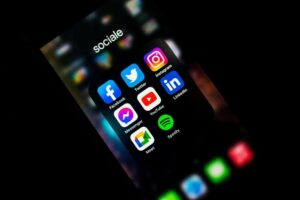
Social media, when integrated into the secondary school curriculum, not only supplements educational content but also fosters the development of students’ digital literacy skills. These skills are increasingly important for higher education and future employment opportunities. In the rapidly evolving digital landscape, it’s estimated that 90% of jobs in Europe require some level of digital proficiency. This includes critical thinking skills to discern credible content and avoid misinformation, collaborative abilities for effective teamwork, and the capacity to articulate well-reasoned opinions.
Thus, the use of social media as a pedagogical tool in secondary schools serves a dual purpose – enhancing education and preparing students for the digital demands of the future.
Digital literacy, the ability to find, evaluate, and communicate information via digital platforms, is a critical skill in the 21st century. Social media, a part of our everyday lives, can be leveraged as a pedagogical tool in secondary schools to enhance students’ digital literacy. How?
– Critical Evaluation of Information: Social media is a vast repository of information, opinions, and claims. This makes it an excellent platform for students to practice critical thinking and source evaluation. They can be taught to identify credible sources, understand biases, and cross-check information. This not only helps them navigate social media more effectively but also fosters a healthy scepticism that is essential in the digital age.
– Understanding Digital Etiquette: Social media is a social space, albeit a digital one. It has its own norms and unspoken rules. By participating in this space, students can learn important aspects of digital etiquette, such as respecting others’ views, understanding the impact of their words and actions, and responding appropriately to different situations. This can help them become more responsible digital citizens and even responsible citizens in general, as these skills transfer to real life as well.
– Effective Communication: Each social media platform has its own language and style. Twitter with its character limit promotes brevity and clarity. Instagram with its focus on visuals encourages creative expression. By using these platforms, students can learn to adapt their communication style to different contexts, a skill that is increasingly important in today’s multi-platform digital world.
– Safe Use of Digital Platforms: Using social media responsibly involves understanding privacy settings, recognising potential online threats, and knowing how to report issues. It’s important for students to learn not just how to use social media, but also how to protect themselves online.
– Real-World Application: Digital literacy is not just about using digital tools but also about understanding how these tools are transforming the world. Many professions now involve managing a company’s social media presence or interpreting social media data. Early exposure to these platforms can give students a head start in these roles.
In conclusion, social media provides a real-world platform where students can practice and develop their digital literacy skills under the guidance of teachers. You can find resources and tools to develop your students’ digital skills on social media on our website https://www.subscribed-project.eu/resources/. We developed pedagogical sequences and safety resources to help you integrate social media into your classroom.
